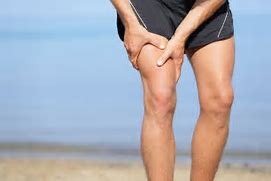Many people over 50 believe that you have to train longer and harder to get better fitness results. This idea is partly correct. However, if you train harder and longer and do not allow your body to recover properly between workouts, your results will suffer.
I interviewed several fitness experts like Joel Jamieson and Richard Harvey, Ph.D. They discussed the importance of heart rate variability (HRV) and its role in our body’s ability to recover from physical, mental, and emotional stress.
Unlike basic heart rate (H.R.) that counts the number of heartbeats per minute, HRV looks much closer at the specific changes in time between successive heartbeats. Heart Rate Variability (HRV) is an accurate, non-invasive measure of the Autonomic Nervous System (ANS) – which responds to everything your body experiences, including how you exercise, recover, eat, sleep, and perceived stress.
The Sympathetic Nervous System controls your body’s “fight or flight” reactions to internal or external stressors. It stimulates the production of blood glucose (to fuel your muscles), pupil dilation (to see danger better), slows digestion (to focus energy on the present threat), and increases heart rate (to ensure adequate blood circulation to run or fight). By design, the SNS overcomes short-terms stress situations such as running from a bear (literally or figuratively). This acute response can become chronic when stress is non-stop from modern daily life, such as work, family issues, financial concerns, and dietary and physical lifestyle choices. However, this same response also occurs when you work out, are challenged mentally, get into an argument, or find yourself in new activities. Chronically accumulated stress from multiple sources can contribute to drastically reduced health and performance over the long term.
The Parasympathetic Nervous System controls your body’s ability to “rest and digest” and is associated with recovery. Parasympathetic activation is designed to conserve energy, constrict pupils, aid digestion, and slow heart rate. These responses are because the PNS fundamentally drives the anabolic processes involved in recovery and is needed to grow faster, stronger, and healthier.
It is essential to understand that the SNS and PSNS control the same organs but with opposite effects. Both systems are always at work, and both are needed to maintain homeostasis (balance or equilibrium) in your body. With every heartbeat, your nervous system sends the body a message to either “slow down or speed up” based on feedback from your senses, emotions, and thoughts. There is a balanced push and pull between the Sympathetic and Parasympathetic branches in a healthy nervous system. Heart Rate Variability is an accurate, non-invasive measure of the ANS and the balance between the SNS and PSNS branches. When HRV increases, it is a sign that the body is in a recovery state. On the other hand, when HRV decreases, it tells us the body is in an overall catabolic state, and recovery is dramatically slowed down.
The ability to shift your body into a recovery mode is the real difference between getting the most results from your fitness activities or getting burned out.
It is important to note that it is possible to accurately track HRV with various biofeedback devices and apps to make better health, fitness, and recovery decisions to achieve your fitness goals.

